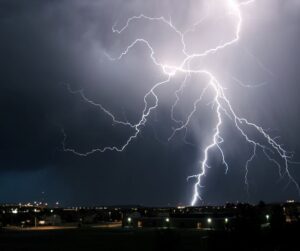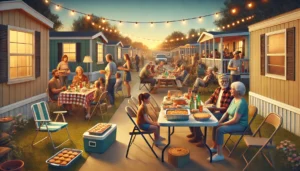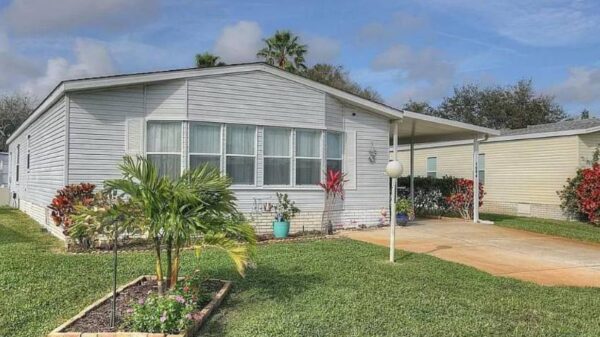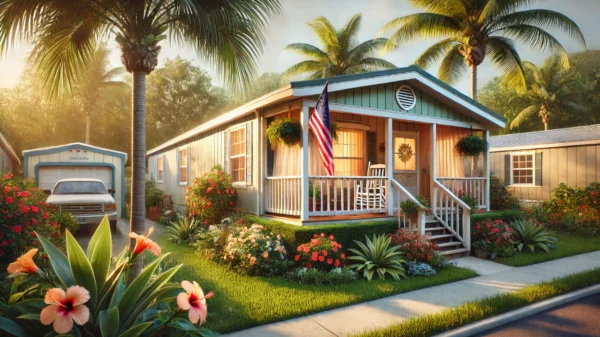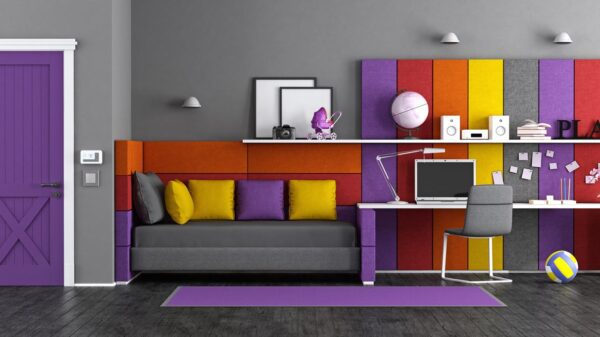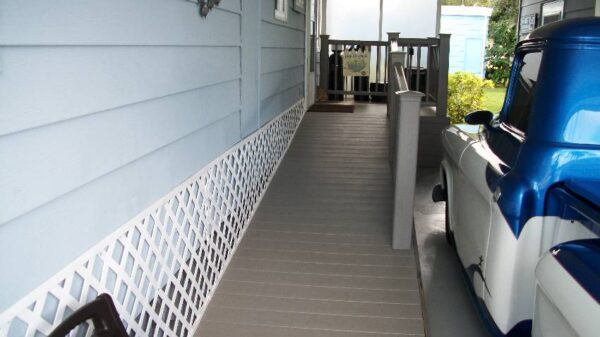Table of Contents
Debunking Myths About Mobile Homes: What You Need to Know
Manufactured and mobile homes have long been misunderstood, misrepresented, and unfairly judged in popular culture and mainstream housing conversations. From outdated perceptions of safety to misconceptions about value, many people still hold onto stereotypes that no longer reflect the reality of today’s manufactured housing industry. This comprehensive guide aims to debunk these myths and provide accurate, up-to-date information that can help homebuyers, investors, and curious readers better understand mobile home living in the 21st century.
Manufactured housing represents a growing and dynamic sector of the housing market. With innovations in construction, energy efficiency, and design, these homes offer a flexible and often more sustainable alternative to traditional site-built homes. Yet despite these advancements, lingering myths and misinformation can make prospective buyers hesitant. By breaking down these misconceptions, this guide hopes to highlight the many advantages and opportunities that come with manufactured homeownership.
Myth #1: Mobile Homes Are Unsafe
The Truth: Modern manufactured homes are built to rigorous safety standards that often exceed those of site-built homes.
The outdated perception that mobile homes are unsafe largely stems from pre-1976 models, built before the implementation of the HUD Code (Manufactured Home Construction and Safety Standards). This federal code, introduced by the U.S. Department of Housing and Urban Development, established comprehensive building standards covering everything from design and construction to energy efficiency and fire safety.
Today’s manufactured homes are engineered to withstand harsh weather conditions, including high winds and storms. In fact, homes placed in Wind Zone II or III (areas more prone to hurricanes and tornadoes) must adhere to even more stringent requirements. These homes are built with reinforced frames, additional anchoring systems, and impact-resistant windows. In many tests, they perform equally or even better than site-built homes in storm conditions.
Modern mobile homes are not “trailers” slapped together with flimsy materials—they are precision-engineered structures built in controlled environments under strict oversight. And with regular maintenance, these homes can remain structurally sound and safe for decades. Fire safety standards are also robust, with flame-retardant materials, hardwired smoke detectors, and improved electrical systems helping reduce risks.
In some regions prone to wildfires, manufactured homes built to the latest HUD standards may even include metal roofing and other fire-resistant features. All of this underscores how far the industry has come in prioritizing safety.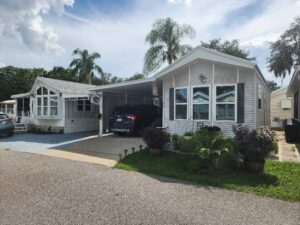
Additionally, manufactured homes are now subject to regular inspections and certifications throughout the build process. Independent third-party inspectors evaluate the structure, electrical systems, plumbing, HVAC, and other critical elements to ensure the home complies with all HUD standards. These inspections are more frequent and standardized than those typically required for site-built homes.
Another key point in safety is how manufactured homes are sited. Professional installation, proper anchoring, and foundation work are crucial to performance during natural disasters. Manufacturers and community developers work with trained installers to meet or exceed local and federal guidelines. In hurricane-prone areas like Florida, manufactured homes installed to the proper standards have proven their durability time and time again.
Lastly, the design of newer manufactured homes incorporates the latest in building science. These homes are built with the same materials used in traditional housing, such as 2×4 or 2×6 framing, fiberglass insulation, and durable vinyl or fiber cement siding. When combined with tight construction techniques, these materials help create a home that is not only strong but also energy-efficient and safe.
So, while the outdated image of unsafe, easily damaged trailers may persist in pop culture, it no longer reflects the reality of manufactured housing. Today’s mobile homes are built for safety, designed for longevity, and regulated to ensure they meet the highest standards in residential construction.
Myth #2: Mobile Homes Depreciate Like Cars
The Truth: Manufactured homes can appreciate in value, especially when placed on owned land and properly maintained.
One of the most persistent myths is that mobile homes lose value the moment they are “driven off the lot,” similar to cars. While it’s true that certain manufactured homes placed in parks or on rented lots may not appreciate at the same rate as site-built homes, the reality is more nuanced and increasingly optimistic.
Numerous studies, including those from the Urban Institute and other housing think tanks, show that manufactured homes can appreciate in value under the right conditions. These include:
- Being placed on a permanent foundation
- Situated in desirable locations with good schools and amenities
- Owned land (instead of leased)
- Proper maintenance and periodic updates such as roofing, siding, and HVAC systems
Additionally, today’s manufactured homes are available with luxury features, high-quality materials, and modern designs that rival traditional housing—making them more appealing and valuable than ever. For many families, a well-maintained manufactured home can serve as a valuable long-term asset.
Homeowners who make smart improvements—such as installing energy-efficient systems, adding outdoor living spaces like decks and porches, or updating interiors—can see increased property values over time. When paired with rising land values, a manufactured home on owned land can offer strong appreciation similar to a site-built home.
Appraisers now consider a wider range of factors when evaluating the value of a manufactured home, including the quality of the home, its location, upgrades, community amenities, and the type of foundation. Homes that are titled as real property rather than personal property—meaning they’re affixed to a permanent foundation and the homeowner owns the land—are far more likely to appreciate in value.
Another key factor in value retention is how well a manufactured home is cared for. Routine maintenance such as repairing roofs, resealing windows, servicing HVAC systems, and keeping up the landscaping can have a significant impact on resale value. Homes that are move-in ready and energy-efficient are more desirable in any market.
In many states, manufactured homes are now eligible for the same types of real estate transactions, tax assessments, and property listings as site-built homes. This elevates their status in the eyes of lenders, real estate agents, and buyers. As awareness of their potential grows, so too does demand.
Finally, it’s worth noting that manufactured homes also offer the potential for passive income through rental opportunities, particularly in areas where affordable housing is scarce. This investment potential adds another layer of long-term financial benefit for savvy homeowners.
In short, while some older or poorly maintained mobile homes may depreciate, the majority of modern manufactured homes—when well-sited and cared for—can maintain and even grow in value, making them a smart and affordable path to homeownership and equity building.
Homeowners who make smart improvements—such as installing energy-efficient systems or updating interiors—can see increased property values over time. When paired with rising land values, a manufactured home on owned land can offer strong appreciation similar to a site-built home.
Myth #3: Mobile Homes Are Poor Quality
The Truth: Manufactured homes today are built with high-quality materials and are subject to rigorous inspections.
Many people assume mobile homes are “cheaply built,” but this couldn’t be further from the truth. In fact, factory-built homes benefit from efficiencies in materials and labor that site-built homes can’t match. Every step of the manufacturing process is carefully monitored, reducing waste and ensuring consistent quality. Unlike on-site construction, which can be affected by weather delays, inconsistent labor, and fluctuating material availability, manufactured homes are assembled in controlled environments where craftsmanship is consistent and streamlined.
The HUD Code mandates strict standards for durability, structural design, fire resistance, energy efficiency, and overall safety. These standards ensure that manufactured homes are comparable in performance and comfort to their site-built counterparts. Over the years, innovations in homebuilding have allowed manufacturers to improve quality across the board—from stronger materials to better air and water sealing to advanced HVAC systems that enhance both comfort and efficiency.
Modern manufactured homes can include features that rival and often surpass those found in traditional homes:
- Energy-efficient windows and appliances
- Drywall interiors and vaulted ceilings

- Hardwood or laminate flooring
- Open-concept floor plans with large living areas
- Custom cabinetry, granite countertops, and high-end fixtures
Some manufacturers also provide options like smart home technology, solar panel pre-wiring, upgraded insulation packages, and noise-reducing features between rooms. These homes are also customizable, meaning buyers can select finishes, layouts, and upgrades that suit their personal tastes and lifestyles.
Manufacturers back their products with warranties covering major systems, construction quality, and appliances. These warranties are often more comprehensive than those offered on newly built site homes. Beyond that, third-party inspectors verify that all HUD Code requirements are met before a home leaves the factory. This level of quality control provides buyers with confidence that the home they’re purchasing has been built with care and precision.
Another benefit of factory construction is reduced environmental impact. Because materials are cut with precision and waste is minimized, manufacturers can maintain a higher standard of material use. Fewer mistakes mean fewer structural defects or callbacks later, which also contributes to better long-term durability.
Ultimately, today’s manufactured homes are built to last. With the same building materials, attention to detail, and adherence to strict codes, they offer an affordable yet high-quality housing solution that deserves serious consideration. These inspectors provide an extra layer of accountability and reassurance for buyers.
Myth #4: Mobile Home Parks Are Dangerous or Run-Down
The Truth: Many manufactured home communities are clean, safe, and offer amenities comparable to traditional neighborhoods.
Another stereotype that’s often perpetuated is the idea that mobile home parks are filled with crime and poverty. While, like any type of neighborhood, the quality can vary, the majority of modern manufactured home communities are well-managed and family-friendly. In fact, many communities now cater to specific lifestyles, such as 55+ retirement communities, pet-friendly developments, or family-focused neighborhoods with playgrounds and after-school programs.
Some amenities you may find in a modern manufactured home community include:
- Gated entries and on-site management
- Security patrols and community watch groups
- Swimming pools and fitness centers
- Playgrounds, picnic areas, and walking trails
- Community events, potlucks, and social clubs
Park owners and managers have every incentive to maintain their properties and attract responsible tenants or homeowners. Well-run communities can feel just as safe, clean, and vibrant as any suburban neighborhood. They often include strict community guidelines and tenant screening processes that help ensure a stable, respectful environment for all residents.
In recent years, there has been a trend toward transforming traditional mobile home parks into attractive lifestyle communities. Developers are investing in upgraded infrastructure, professional landscaping, and resident amenities to appeal to modern buyers. In some communities, you’ll even find on-site maintenance teams, community centers, libraries, or business hubs with Wi-Fi access for remote workers.
In some cases, residents collectively purchase their park through cooperative agreements, allowing homeowners to take full control over community decisions and long-term improvements. These resident-owned communities (ROCs) are becoming increasingly popular and are an excellent model for affordable, community-driven housing. ROCs give homeowners stability and the opportunity to build equity, all while maintaining affordable monthly costs.
Furthermore, safety statistics from various state and municipal sources show that many mobile home communities have crime rates no higher than the surrounding areas. Like any neighborhood, community atmosphere is largely shaped by management, rules enforcement, and resident involvement. Many manufactured home communities go above and beyond to create inclusive and welcoming environments for families, retirees, veterans, and working professionals alike.
The outdated image of a neglected, unsafe trailer park no longer reflects the majority of manufactured home communities across the country. As housing needs evolve, these communities are proving to be resilient, affordable, and increasingly attractive places to live for a wide range of people.
Myth #5: You Can’t Get Financing for a Mobile Home
The Truth: Multiple financing options are available for manufactured homes, including government-backed loans.
This myth may have some roots in truth, especially for older mobile homes or those on rented land. However, the financing landscape has evolved significantly, and today’s buyers have access to a variety of financing options, many of which are similar to those available for site-built homes.
Manufactured home buyers can apply for loans backed by the Federal Housing Administration (FHA), the Department of Veterans Affairs (VA), and the U.S. Department of Agriculture (USDA). These programs help expand access to affordable housing by offering competitive interest rates and low down payment requirements. FHA Title I loans are commonly used for homes located in communities or on leased land, while Title II loans are used for homes attached to owned land. VA and USDA loans, meanwhile, offer zero-down financing to qualified buyers, especially in rural areas.
Fannie Mae and Freddie Mac also back loans for manufactured housing through programs like MH Advantage® and CHOICEHome®. These programs offer financing terms that more closely resemble those of site-built homes, including lower interest rates, longer repayment periods, and fixed-rate mortgages. They typically apply to newer manufactured homes that meet specific design and construction standards, such as being placed on a permanent foundation and including features like garages or porches.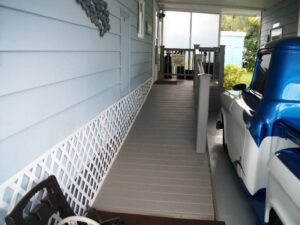
For homes classified as personal property—those not affixed to land—buyers may pursue chattel loans. While these loans may carry higher interest rates and shorter terms, they offer flexibility for purchasing homes in manufactured home communities or parks. More lenders are beginning to recognize the demand for affordable housing and are stepping in to offer competitive chattel loan products.
Private lenders, credit unions, and community banks have also entered the manufactured housing market, many of them offering customized loan packages. These institutions often provide quicker approvals and more flexible underwriting criteria than larger banks. Working with a lender who specializes in manufactured housing is key to finding the best deal and understanding available options.
To further improve access, government programs like the Duty to Serve initiative by the Federal Housing Finance Agency (FHFA) are encouraging lenders to serve manufactured home buyers more effectively. These policies aim to make loans more available and affordable, especially in underserved communities.
One often-overlooked strategy for securing financing is to combine the home and land purchase into a single mortgage. When a manufactured home is permanently affixed to the land and titled as real estate, it is often easier to finance with a traditional mortgage, which opens the door to better terms, lower rates, and longer repayment periods.
Buyers should also keep in mind the importance of credit scores, income verification, and down payment availability. Just like with site-built homes, a strong financial profile increases the likelihood of securing better financing. Fortunately, some programs offer assistance for first-time buyers or those with less-than-perfect credit.
In summary, manufactured homes are no longer a financing gray area. With a growing number of options—from federal loan programs to private lenders—buyers have multiple paths to homeownership. The myth that financing a manufactured home is impossible simply doesn’t hold up in today’s market. Working with lenders who specialize in manufactured housing can also help buyers find better terms and service.
Some credit unions and regional banks also offer attractive financing terms. Additionally, programs like the Duty to Serve initiative by the Federal Housing Finance Agency (FHFA) are designed to encourage lending in underserved markets, including manufactured housing.
Myth #6: Mobile Homes Are Only for Low-Income Families
The Truth: Manufactured homes appeal to a wide range of buyers, from retirees to millennials to investors.
While affordability is certainly a key benefit, manufactured homes aren’t just a last resort for those with limited financial means. Today’s buyers include young professionals entering the housing market, retirees seeking to downsize, digital nomads, and real estate investors looking to expand their portfolios with affordable properties.
Manufactured homes are available in a variety of sizes and styles, from modest single-wides to expansive multi-section homes with luxury finishes. These homes are found in high-end gated communities, waterfront parks, and rural retreats alike. Increasingly, people are turning to manufactured housing for lifestyle benefits—not just financial savings.
Many upscale manufactured home communities cater to active adults, vacation homeowners, and environmentally conscious buyers who appreciate the smaller carbon footprint and energy-efficient features of factory-built homes. These communities may offer amenities like golf courses, fitness centers, walking trails, and social clubs—far from the stereotypical image of a run-down mobile home park.
In addition, modern manufactured homes are customizable and offer high-end features such as granite countertops, smart home technology, stainless steel appliances, walk-in closets, vaulted ceilings, and spa-style bathrooms. This level of design flexibility attracts buyers who value aesthetics and comfort alongside affordability.
Mobile homes are also gaining traction among younger buyers priced out of traditional housing markets. In many parts of the U.S., manufactured homes represent one of the only accessible paths to homeownership for millennials and Gen Z buyers. With rising interest in minimalism, debt reduction, and lifestyle freedom, many young adults view manufactured housing as a strategic way to achieve financial independence.
Real estate investors and developers are also turning to manufactured homes as a scalable solution for affordable housing. They’re developing communities tailored to workforce housing, veterans, and seniors on fixed incomes. This trend not only highlights the economic viability of manufactured homes but also their potential for long-term wealth-building and social impact.
The diversity of ownership and usage underscores the growing appeal of manufactured homes across all demographics and income levels. As manufactured housing continues to evolve in style, quality, and community appeal, it’s increasingly clear that these homes are not limited to any one socioeconomic group—they’re a smart choice for a wide variety of lifestyles and budgets.
Myth #7: Mobile Homes Are Temporary Housing
The Truth: Manufactured homes are built for permanent residence and can last for decades with proper care.
A common misconception is that mobile homes are akin to temporary shelters or transitional housing. While early mobile homes were designed with mobility in mind, modern manufactured homes are engineered and constructed to serve as permanent residences. They are built to meet rigorous federal HUD Code standards, which govern structural integrity, durability, energy efficiency, and safety—making them no less viable for long-term occupancy than traditional site-built homes.
When a manufactured home is placed on a permanent foundation and titled as real property, it becomes a lasting fixture within a neighborhood or community. Homeowners can—and often do—live in these homes for decades. With regular upkeep, such as roofing replacements, HVAC servicing, updated insulation, and proper maintenance of plumbing and electrical systems, a manufactured home can easily provide a comfortable living environment for 40 to 60 years or more.
Manufactured homes are increasingly used as primary residences, retirement homes, and even multigenerational family dwellings. In fact, many of these homes are passed down from parents to children, just like traditional houses. Homeowners often invest in upgrades, additions, and remodels over time—such as adding garages, screened-in porches, decks, and modern kitchens—further reinforcing their long-term value and functionality.
In addition, manufactured homes are being utilized in permanent housing solutions for veterans, disaster recovery programs, and affordable housing initiatives. Their ability to be delivered and set up quickly, while still offering long-term housing quality, makes them a valuable asset in both public and private sectors.
It’s also worth noting that the perception of mobile homes as temporary has been shaped more by zoning laws and financing practices than by the homes themselves. As more municipalities revise their codes to allow for manufactured housing in residential zones—and as lenders offer better financing options—manufactured homes are gaining recognition as legitimate long-term housing choices.
So, while the word “mobile” may evoke images of impermanence, the reality is that today’s manufactured homes are permanent, durable, and increasingly popular housing solutions. With thoughtful placement, routine maintenance, and customization, they can offer families a stable and lasting place to call home for generations.
Myth #8: You Can’t Customize a Mobile Home
The Truth: Manufactured homes offer extensive customization options both at the time of purchase and afterward, allowing buyers to create truly personalized living spaces.
One of the biggest misconceptions about mobile homes is that they come in a “one-size-fits-all” package, lacking the flexibility and design choices available with traditional site-built houses. In reality, modern manufactured homes provide a wide variety of customization options that let buyers tailor their home to their lifestyle, taste, and budget.
When ordering a new manufactured home, buyers can often select from multiple floor plans that range from cozy two-bedroom single-wides to spacious multi-section homes with four or more bedrooms. Beyond layout, customization extends to interior finishes such as cabinetry styles, countertop materials (granite, quartz, laminate), flooring options (carpet, hardwood, vinyl plank), and even ceiling treatments including vaulted or tray ceilings.
Kitchen design is another area where customization shines. Buyers can choose the type of appliances, island configurations, pantry space, and lighting fixtures. Bathrooms can be upgraded with luxury options like spa tubs, walk-in showers, double sinks, and modern vanities.
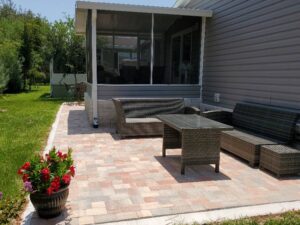
Exterior features are also highly customizable. Options may include vinyl or fiber cement siding, brick or stone accents, various roof styles and colors, as well as porches, decks, carports, and garages. Some manufacturers offer premium packages that include smart home pre-wiring, solar panel setups, enhanced insulation, and energy-efficient windows to boost comfort and reduce utility bills.
Customization doesn’t stop after purchase. Homeowners frequently renovate or add to their manufactured homes just like site-built homeowners. Additions such as sunrooms, extra bedrooms, decks, and garages are common. Interior remodels can include updated kitchens, fresh paint, new flooring, or installing smart home devices. These improvements not only enhance livability but also increase resale value.
Many buyers appreciate that manufactured homes allow for a high level of personalization without the exorbitant costs often associated with custom-built houses. The controlled factory construction process enables manufacturers to offer affordable customization packages and upgrades that would be significantly more expensive on a traditional build.
Moreover, manufactured homes can be designed to meet special needs, such as wheelchair accessibility or energy efficiency standards. This makes them appealing to a wide range of buyers, from first-time homeowners to retirees seeking comfortable, tailored spaces.
Ultimately, manufactured homes offer a flexible and adaptable housing solution that breaks the stereotype of cookie-cutter, limited options. Today’s buyers can enjoy all the benefits of customization and style, with the added advantage of affordability and efficiency.
Myth #9: Mobile Homes Are an Environmental Disaster
The Truth: Manufactured homes are often more environmentally friendly than site-built homes due to efficient construction methods, reduced waste, and energy-saving features.
One of the common negative perceptions about mobile homes is that they contribute heavily to environmental degradation. This myth likely arises from outdated images of older, poorly insulated homes that relied on inefficient heating and cooling systems. However, modern manufactured homes are increasingly designed and built with sustainability and environmental responsibility in mind.
Because manufactured homes are built in factory settings, the construction process is highly controlled and optimized to minimize waste. Unlike traditional site-built homes where excess materials are often discarded on-site, factories cut materials with precision, recycling scraps whenever possible. This systematic approach significantly reduces the environmental footprint associated with construction.
The use of advanced building materials and technologies further improves the eco-friendliness of manufactured homes. Many are constructed with energy-efficient windows, superior insulation, and airtight sealing to prevent heat loss or gain. These features result in lower heating and cooling needs, which not only reduce utility bills but also decrease greenhouse gas emissions associated with energy use.
Many manufacturers also utilize environmentally responsible materials, such as low-VOC (volatile organic compound) paints, adhesives, and finishes that improve indoor air quality and reduce harmful emissions. Additionally, some homes include formaldehyde-free insulation and sustainable wood products certified by organizations like the Forest Stewardship Council (FSC).
Modern manufactured homes often come equipped with ENERGY STAR® rated appliances, LED lighting, and high-efficiency HVAC systems designed to minimize energy consumption. Some models also offer options for solar panel pre-wiring, allowing homeowners to easily integrate renewable energy sources.
Water conservation is another area where manufactured homes can excel. They may include low-flow faucets, showerheads, and toilets that reduce water usage without sacrificing comfort.
Smaller footprints compared to many traditional homes mean that manufactured homes inherently require fewer building materials and consume less energy for heating and cooling. This compact size appeals to homeowners interested in minimizing their environmental impact while still enjoying quality living spaces.
Furthermore, because manufactured homes can be relocated, they offer flexibility that can reduce urban sprawl and the need for new land development, preserving natural habitats and green spaces.
Manufactured housing communities often incorporate green spaces, community gardens, and walking paths that foster sustainable living environments and promote outdoor activity.
While no housing option is entirely without environmental impact, manufactured homes represent a growing segment of the housing market that prioritizes sustainability through design, construction, and operation. As more manufacturers adopt green building practices and consumers demand energy-efficient homes, this trend will only accelerate.
In conclusion, the idea that mobile homes are environmental disasters is a dated misconception. Modern manufactured homes often outperform traditional site-built homes in terms of energy efficiency, waste reduction, and sustainable materials use, making them a responsible choice for eco-conscious homeowners.
Myth #10: Mobile Homes Can’t Be a Good Investment
The Truth: Manufactured homes can be excellent investments when properly located, maintained, and managed, offering opportunities for equity growth, rental income, and portfolio diversification.
Many people assume that mobile homes are poor investments because they imagine rapid depreciation or limited resale value. While some older or poorly maintained homes may lose value, modern manufactured homes—especially those placed on owned land and in desirable locations—can provide strong returns over time.
One of the key advantages of manufactured homes as investments is their affordability. Lower purchase prices mean investors can enter the housing market with less capital compared to traditional site-built homes. This accessibility enables investors to diversify their portfolios or generate passive income through rentals with comparatively lower risk.
In markets where affordable housing is scarce, manufactured homes fill an important niche by providing quality, affordable options for renters and buyers. This demand translates into strong rental occupancy rates and steady cash flow for investors who manage their properties well.
Real estate investors often purchase manufactured homes to rent in workforce housing areas, retirement communities, or college towns, where housing demand remains consistent. With proper screening and management, these properties can generate reliable monthly income and appreciate alongside the local real estate market.
Another investment strategy involves buying older manufactured homes, renovating them with upgrades such as energy-efficient appliances, modern flooring, and improved curb appeal, then reselling at a profit. This “fix and flip” approach leverages the home’s affordability and potential for value-add improvements.
For investors interested in larger-scale projects, developing manufactured home communities or cooperatives can offer substantial returns. Such developments cater to the growing demand for affordable housing while benefiting from economies of scale and community amenities that attract quality tenants.
Additionally, manufactured homes that are permanently affixed to owned land and titled as real property tend to appreciate more reliably, just like traditional homes. When paired with rising land values, these homes can build significant equity over time.
Some investors also explore rent-to-own or lease-purchase agreements with manufactured homes, providing a pathway to homeownership for tenants while securing a steady income stream and eventual sale profits.
 It’s important to note that like any real estate investment, success depends on location, market conditions, property condition, and management. Proper due diligence, ongoing maintenance, and understanding local regulations are essential for maximizing returns.
It’s important to note that like any real estate investment, success depends on location, market conditions, property condition, and management. Proper due diligence, ongoing maintenance, and understanding local regulations are essential for maximizing returns.
The manufactured housing sector has also seen increased interest from institutional investors and real estate investment trusts (REITs), signaling growing confidence in the asset class. This trend has led to improved financing options, professional property management services, and enhanced market visibility.
In summary, manufactured homes can be solid, lucrative investments when approached thoughtfully. They offer a unique blend of affordability, flexibility, and income potential, making them a valuable component of many real estate portfolios.
Final Thoughts
Mobile home living has evolved far beyond the outdated tropes of yesteryear. As this article demonstrates, today’s manufactured homes offer high quality, safety, comfort, and even luxury at a fraction of the cost of traditional housing. By debunking these persistent myths, we hope to encourage a more informed and open-minded perspective on what mobile home living really means in today’s world.
Whether you’re a prospective buyer, a curious skeptic, or a real estate investor, manufactured homes deserve a closer look. They’re not just an affordable alternative—they’re a smart, sustainable, and increasingly popular choice for modern living. With changing attitudes and rising housing costs, it’s time to recognize the role of manufactured housing as a vital and valuable part of the American housing landscape.
